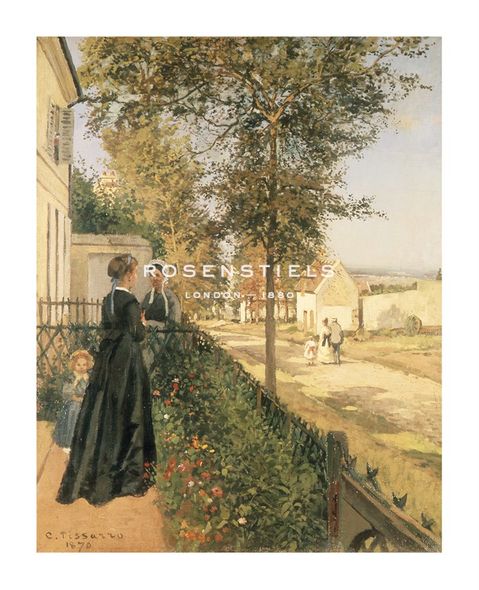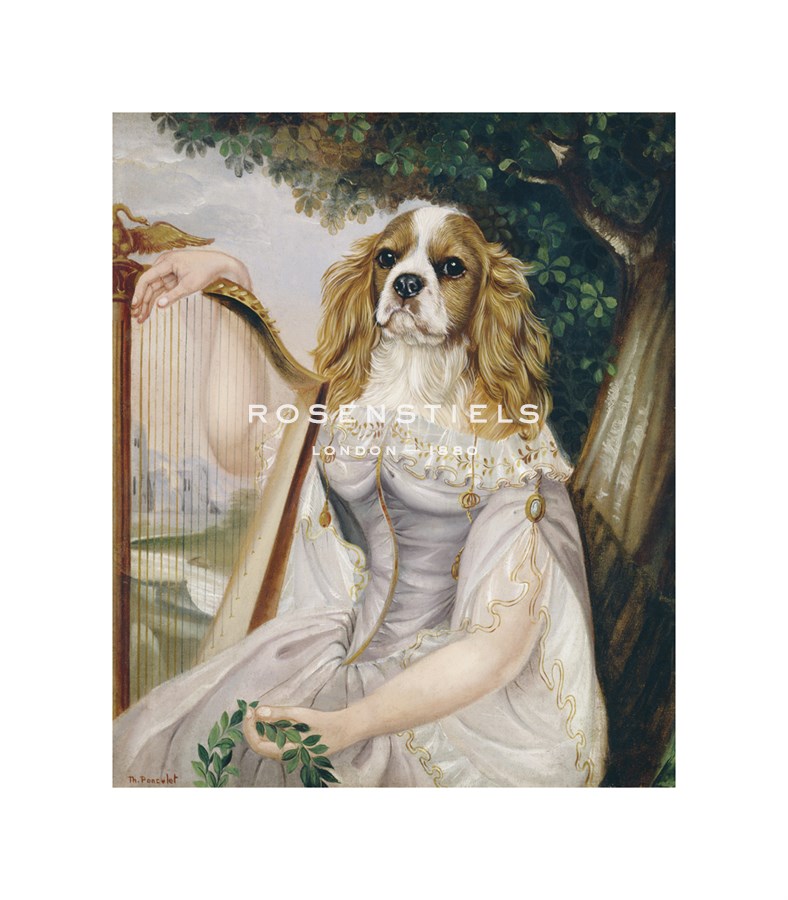
Camille Pissarro Hand Numbered Limited Edition Print on Paper :"The Road to Versailles"
Title: The Road to Versailles
Dimensions (W x H ): Paper Size: 26 x 32 in | Image Size: 22 x 28 in
Edition | Medium: Each print is hand numbered, accompanied by a certificate signed by the Master Printer and is numbered to match the print. The editions are limited to 1880 copies. |
This Gouttelette print on paper is published with light-fast inks to BS1006 Standard onto acid-free calcium carbonate buffered stock, mould-made from 100% cotton and sourced from environmentally conscious paper suppliers. This product is exclusive to Rosenstiels.
About the Art: Superior Edition
About the Artist:
Born in 1831 in St.Thomas, West Indies, Pissarro's mother was Creole and his father Portuguese Jewish. Working as a clerk in his father's general store did not satisfy him, and in 1852 he escaped to Venezuela with a Danish painter. His annoyed parents were finally able to resign themselves to his becoming an artist and Pissarro arrived in Paris in 1855. There he saw the great exhibition at the World Fair and met Corot, by whom he was deeply influenced.
His connection with Monet was also an enormous influence on him and by 1863 several of his pictures were exhibited in the Salon des Refuses. Between 1866 and 1869 he worked on landscapes painted entirely in the open air but he could sell almost nothing and he and his family lived in utter poverty.
In 1870 he fled to London before the German invasion. Eventually, news reached him that his house had been used as a butchery by the invaders and that his store of 200 to 300 pictures had been used as dart boards in the muddy garden. Despite this heartbreak, in 1874 he prepared for and took part in the first Impressionist exhibition. He was the only artist to exhibit in all eight of these momentous exhibitions but it was also he who introduced Gauguin, Seurat and Sigmac to the group and was partly responsible for the consequent disruption amongst the group.
From 1895 the worsening of his eye trouble forced him to give up working out of doors and he painted many town views from windows in Paris, although he died blind. His production was huge and he experimented with all techniques. He never compromised, he did his best to compose the bitter quarrels that broke out around him in the Impressionists’ group, and he never blamed anyone for their defections, intolerance, impatience and spites. Pissarro thus received respect and admiration both for his principles and for his art.













